#Eco-Friendly Metal Techniques
Explore tagged Tumblr posts
Text
Sustainable Practices in Metal Processing: Shaping a Greener Future

The metal processing industry stands at the crossroads of innovation and sustainability, seeking to reduce its environmental footprint while maintaining efficiency and productivity. As global awareness of environmental issues grows, so does the push for sustainable practices within this sector. This blog explores how the metal processing industry is embracing greener technologies and methodologies to pave the way for a more sustainable future.
Sustainable Innovations in Metal Processing:
Recycling and Material Recovery: Advances in sorting and processing technologies have significantly improved the efficiency of metal recycling, turning scrap into high-quality materials for new products.
Energy-Efficient Processes: From electrification of heat processes to the adoption of renewable energy sources, the industry is cutting down on carbon emissions and energy consumption.
Water Conservation Techniques: Innovations in water treatment and recycling reduce the industry’s water footprint, ensuring that less freshwater is consumed during metal processing.
The Benefits of Going Green:
Reduced Environmental Impact: By minimizing waste and emissions, metal processing companies are contributing to cleaner air and water, and less landfill.
Cost Savings: Energy and resource efficiency not only benefit the planet but also lead to significant cost reductions in the long run.
Market Advantage: Sustainability is increasingly becoming a competitive edge, with more customers and partners favoring environmentally responsible companies.
Conclusion
The journey towards sustainability is both a challenge and an opportunity for the metal processing industry. By investing in eco-friendly technologies and practices, businesses can ensure their growth while safeguarding the planet for future generations. The shift to sustainability is not just about compliance but about embracing a vision for a greener, more sustainable industry.
Original content: https://quickmetals.com/sustainable-practices-in-metal-processing-shaping-a-greener-future/
#Cincinnati Metal Fabrication#Eco-Friendly Metal Techniques#Sustainable Manufacturing Practices#Sustainable Metal Processing
0 notes
Text
Decoupage decorative box Alphonse Mucha Zodiac



Handmade item
Ships from a small business in Poland
Materials: wood, decoupage, hand painted, felt, metal
Jewelry type: Bracelet, Brooch, Earrings, Necklace, Ring
Length: 8.3 Inches; Width: 5.0 Inches; Height: 2.5 Inches
Gift wrapping available
This wooden jewelry box inspired by the work of Alphonse Mucha, which is not just a practical box, but also a work of Art. My own design on the sides and top. Gift wrapping is included in the price. The unusual and rare shape of this box attracts attention at first sight! Dimensions - Length 21 cm (8.3 inches) Width 13.5 cm (5.0 inches) Height 7.0 cm (2.5 inches) Techniques and materials used - 1. Wood. 2. The inside bottom is made of natural felt. 3. Decorated using decoupage technique and hand-painted. I usually coat all products inside and outside with acrylic, eco-friendly, water-based, safe varnish. Please also note that I have a clean art studio, with no animals in our house and no one smokes. This decorative decoupage box serves as a charming jewelry organizer where you can store your favorite rings and earrings in style. Here you can also store your precious memories - letters and postcards. This unique handcrafted wooden ring box doubles as an earring organizer and trinket box, making it a truly versatile item. This one-of-a-kind creation is ideal as a gift for women who appreciate handmade items. It is sure to add a touch of elegance to any vanity. We also have unique vintage jewelry - you can choose and add to your unique jewelry box to make your gift even more original - https://www.etsy.com/shop/ElegantHomeStorePL Thank you for your support and appreciation of Art! Your support means the world and life to me. Your creative artist Julia 👩🏻🎨
#etsyshop#home decor#wooden jewelry box#housewarming#Alphonse Mucha#Wooden Jewelry Box#Decoupage#Decorative Box#Great Grandma Gift#Memory Box#Stash Box#Jewelry Organizer#Wooden Ring Box#Earring Organizer#Jewlery Box#Jewelry Box#Gift Elderly Women#Gifts for Girlfriend#Gifts for Mom#Gifts for Sister#Gifts for Wife#Anniversary Gifts#Christmas Gifts#Gifts for Her#Housewarming Gifts#Personalized Gifts#Gifts
9 notes
·
View notes
Text
The Role of Metal Decorative Inks in Modern Printing
Metal decorative inks have carved out a significant niche in modern printing due to their ability to add a distinctive, eye-catching aesthetic to various printed materials. These inks, which contain metallic particles, provide a unique finish that can enhance the visual appeal of products like brochures, packaging, labels, and high-end marketing materials. Here, we explore the role of metal decorative inks in modern printing, focusing on their applications, benefits, and how they are revolutionizing the printing industry.
What Are Metal Decorative Inks?
Metal decorative inks are inks that contain metal-based pigments, such as aluminum, bronze, or copper, which create a shiny, reflective finish. These inks are typically used in offset, flexographic, and screen-printing processes. Depending on the type of metallic pigment used, the ink can produce effects ranging from a subtle sheen to a bold, mirror-like finish.
Applications in Modern Printing
One of the key benefits of metal decorative inks is their versatility across a wide range of printing applications. They are commonly used in:
1. Packaging: In the packaging industry, metal inks are used to create high-quality finishes that help products stand out on the shelf. Metallic inks can be applied to a variety of materials, including paper, cardboard, and plastic, enhancing the appeal of food packaging, luxury goods, and cosmetics packaging.
2. Promotional Materials: Businesses often use metallic inks for promotional items like brochures, business cards, and flyers. The shiny finish helps to attract attention and can elevate the perceived value of the brand.
3. Labels and Tags: Metallic inks are a popular choice for labels on bottles, jars, and products in industries such as beverages, cosmetics, and high-end retail. The gleaming effect created by metal inks adds an extra layer of sophistication to product packaging.
4. Greeting Cards and Invitations: In the realm of stationery, metallic inks are often used for greeting cards, wedding invitations, and other special event stationery to convey elegance and luxury.
Benefits of Metal Decorative Inks
1. Enhanced Aesthetics: The most apparent benefit of using metal decorative inks is the visual impact. Metallic finishes can add depth, texture, and a premium feel to printed materials, making them highly desirable in competitive markets.
2. Brand Differentiation: In a world where brands are constantly seeking ways to differentiate themselves, the use of metallic inks can help products stand out. The shiny finish can evoke a sense of exclusivity, helping brands position their products as high-quality and luxurious.
3. Durability and Resistance: Metallic inks tend to be more durable than regular inks. They are often more resistant to fading, smudging, and scratching, which is particularly valuable for items like packaging that may undergo handling and transport.
4. Variety of Effects: Metal inks can produce a range of effects depending on the type of pigment and the printing technique used. From glossy to matte finishes, and from fine details to broad metallic coverage, the possibilities are vast.
Challenges in Using Metal Inks
While metal decorative inks offer several benefits, they are not without challenges. One issue is the higher cost compared to standard inks, which may limit their use in certain applications. Additionally, the printing process with metallic inks requires precision and specialized equipment, as these inks have different viscosity and drying characteristics compared to traditional inks.
Another consideration is the environmental impact. The use of metal-based pigments can raise concerns about sustainability, especially if the inks are not formulated with eco-friendly materials. In modern printing, metal decorative inks offer an exciting way to elevate the look of printed materials. From packaging to promotional items, these inks provide aesthetic advantages that can significantly enhance the perceived value of products. Despite challenges such as cost and environmental concerns, the impact metal inks have on design and marketing remains undeniable, making them a valuable tool in the world of printing.
2 notes
·
View notes
Text
Simple Ways To Embrace Sustainable Living in Your Daily Life

Are you tired of feeling like your day-to-day routine is contributing to the destruction of our world? Do you wish to make a difference but don't understand where to begin? Well, look no further because we have actually got you covered!
With our article "Simple Ways To Embrace Sustainable Living in Your Daily Life", we aim to provide you with practical and simple actions to include sustainable living practices into your everyday regimen. From reducing plastic waste to conserving energy, small modifications can make a big distinction in creating a more eco-friendly lifestyle.
In this article, we'll talk about tips and techniques that are both great for the environment and beneficial for your health and wallet. Whether you're a university student, a working specialist, or a stay-at-home mom or dad, our detailed guide will assist you take those crucial very first actions towards a sustainable lifestyle.
Table Of Contents
1. Understanding Sustainable Living 2. Decreasing Carbon Footprint 3. Public Transport and Sustainable Commute 4. Single-Use Plastic Alternatives 5. Food Choices and Sustainable Consuming 6. Mindful Consumption and Ethical Fashion 7. Waste Management and Recycling 8. Conclusion
youtube
Understanding Sustainable Living

Sustainable living is a conscious option to live in a more environment-friendly way that lowers greenhouse gas emissions and decreases our negative environmental impact on the planet. It means choosing to be more conscious of the natural deposits we utilize and discovering methods to both decrease and recycle products in our daily lives. Here are some practical and simple ways you can start accepting green living in your everyday life:
1. Start with the essentials
Begin by making little modifications to your day-to-day routine that can have a big impact in the long run. This consists of shutting off devices and lights when not in use, taking shorter showers, and utilizing environmentally friendly cleansing items. These simple steps can help in reducing your carbon footprint and save energy and resources.
2. Buy reusable products
Single-use products like plastic bags, straws, and water bottles have a substantial unfavorable effect on the environment. By investing in reusable items, such as cloth bags, metal straws, and reusable water bottles, you can substantially minimize the amount of waste you produce and help secure the world.
3. Select sustainable transport choices
Automobiles are a significant factor to greenhouse gas emissions. By picking sustainable transportation choices like public transport, biking, or strolling, you can reduce your carbon footprint and add to a healthier planet.
4. Bear in mind your food choices
The food industry has a substantial impact on the environment. By picking natural and locally produced foods, decreasing meat usage, and preventing food waste, you can lower your environmental effect and promote sustainable living.
5. Choose sustainable style
The fashion business is a significant contributor to greenhouse gas emissions, pollution, and waste. By selecting ethical and sustainable style choices, you can help lower the negative impact of the industry on the environment.
6. Practice conscious consumption
Prior to making a purchase, ask yourself if you truly need it and if it aligns with your values of sustainable living. Consider choosing items made from sustainable materials and choose for product packaging that can be recycled.
7. Manage your waste
Proper waste management and recycling is key to minimizing our negative influence on the planet. Arrange your waste into recyclable and non-recyclable materials, and ensure to get rid of them properly. Consider composting natural waste to produce nutrient-rich soil for your garden.
Decreasing Carbon Footprint

Minimizing your carbon footprint is among the most efficient ways to accept sustainable living. Here are some basic actions you can take:
1. Reduce energy intake: Decreasing your energy usage is a great way to decrease your carbon footprint. Consider turning off lights and appliances when not in use, using energy-efficient light bulbs, and disconnecting electronics when they are not being used. This can make a huge difference in reducing energy use, which in turn lowers greenhouse gas emissions.
2. Use natural light: Take benefit of natural light by opening drapes and blinds throughout the day. Not just does it supply terrific lighting, but it also helps you reduce your energy usage.
3. Stroll or bike: Try walking, cycling or utilizing public transportation instead of driving when possible. This can assist decrease the amount of greenhouse gases that are released from cars and other automobiles.
4. Shop sustainably: Consider buying products that are made from sustainable materials, are eco-friendly, or are produced in an environment-friendly way. This helps in reducing the demand for items that contribute to greenhouse gas emissions.
5. Reduce waste: Try to lower the amount of waste you produce by composting, recycling, and using re-usable bags and containers instead of disposable ones. This helps reduce the quantity of waste that ends up in landfills, which can contribute to greenhouse gas emissions.
6. Conserve water: Conserving water is likewise a great way to reduce your carbon footprint. You can do this by repairing leakages, taking shorter showers, using low-flow faucets and toilets, and collecting rainwater for plants.
7. Consume a plant-based diet: Eating a plant-based diet plan can also help in reducing your carbon footprint. This is since animal items need more resources to produce than plant-based items, and their production can contribute to greenhouse gas emissions.
Public Transport and Sustainable Commute

When it pertains to reducing your carbon footprint and greenhouse gas emissions, one of the very best ways to do so is by making use of mass transit. Not just does this help to reduce traffic blockage, but also assists to minimize the number of cars on the road. Here are some practical and easy actions to integrate sustainable transit practices into your day-to-day commute:
Use Mass Transit
-Benefit from buses, trains, and trains whenever possible.
-By making use of public transport, you're helping to decrease the variety of automobiles on the roadway, which can result in fewer greenhouse gas emissions.
Carpooling
-Consider carpooling with coworkers, pals, or household members to lower the number of cars on the roadway.
-This is an excellent way to minimize traffic, while also decreasing your carbon footprint.
Cycling and Strolling
-If you're not too far from your location, consider biking or walking.
-These sustainable commute alternatives not just lower your carbon footprint, but they can also benefit your health!
"Cycling and strolling not just decreases your carbon footprint however likewise assists fight climate change, as it reduces energy usage and decreases the number of vehicles on the roadway." -Andy Murdock, Transportation and Environment Program Director.
Use Sustainable Commute Tools
-Use online tools, like Google Transit or Citymapper, to help plan your sustainable commute.
-This can help you find the finest transit routes, bike paths, and walking instructions in your city.
Single-Use Plastic Alternatives

Single-use plastics are a considerable contributor to plastic waste in the environment. By making a few basic changes in your life, you can minimize your usage of single-use plastics and help make a positive impact on the environment.
1. Bring multiple-use shopping bags to the grocery store: Rather of using plastic bags that wind up in garbage dumps or oceans, bring your own recyclable bags. Not only is this an easy way to minimize your plastic use, however numerous stores and markets offer incentives for bringing your own bags.
2. Use a reusable water bottle: Plastic water bottles are a significant contributor to land fill waste. By using a multiple-use water bottle, not only will you decrease your plastic waste, however you'll also conserve cash in the long run.
3. Swap plastic straws for multiple-use ones: Americans use and throw away countless plastic straws every day, contributing to the plastic pollution crisis. Swap out plastic straws for stainless-steel, glass, or bamboo straws that are recyclable and washable.
4. Select recyclable food containers: Instead of utilizing cling wrap or non reusable containers to save your food, think about utilizing recyclable glass or silicone containers. Not only are they much better for the environment, but they also make for simpler and more efficient food storage.
Food Choices and Sustainable Consuming

One of the most effective ways to accept sustainable living practices is to make mindful choices about the food you consume. By choosing eco-friendly food choices, lowering food waste, and supporting local farmers and growers, you can considerably affect the environment and promote sustainable living.
Here are some easy and practical suggestions to assist you incorporate sustainable food options in your everyday regimen:
1. Choose Plant-Based Alternatives: Meat production has a significant impact on the environment, as it requires large amounts of water, land and energy. By reducing your meat consumption and choosing plant-based alternatives, you can reduce your carbon footprint and also have a healthier lifestyle.
2. Lower Food Waste: Did you understand that almost one-third of all food produced around the world is squandered every year? Minimizing food waste is not just great for the environment, but also for your wallet. Strategy your meals, make a grocery list, and purchase only what you need. Utilize all parts of fruits and vegetables, and store them effectively to avoid putridity. Donate excess food to regional shelters and charities.
3. Support Local Farmers: Buying regional produce not only supports the neighborhood but also promotes sustainable farming. By picking to purchase from local farmers and growers, you decrease the carbon footprint related to long-distance transport, and you get fresh and healthy food. Go to farmer's markets, community-supported agriculture (CSA) programs, and regional food co-ops to discover sustainable and locally-grown foods.
4. Select Sustainable Seafood: The oceans are an essential part of the environment and provide a source of nutrition for millions of individuals. However, overfishing and unsustainable fishing practices have placed many fish species in danger. Pick sustainably gathered seafood alternatives, look for eco-labels such as the Marine Stewardship Council (MSC) or Aquaculture Stewardship Council (ASC) and prevent seafood that is on the red list of threatened types.
5. Grow Your Own Food:��Growing your own food promotes self-sufficiency and decreases your carbon footprint. Even if you don't have a large yard, you can grow herbs, veggies, and fruits in small pots and even in your cooking area. This is a terrific method to get fresh and natural produce, and likewise to get in touch with nature.
Mindful Consumption and Ethical Fashion

From food to fashion, we consume a vast array of products daily. One of the significant threats to the environment is fast fashion. Fast fashion is a term used to describe an industry that produces clothes quickly and exploits labor and environmental laws.
So, how can we minimize our ecological effect through mindful usage and ethical fashion?
1. Buy pre-owned clothing
Rather of buying brand-new clothes, explore thrift stores, yard sale, and online markets like eBay, Poshmark, or ThredUp. Purchasing pre-owned clothes is a sustainable practice that decreases waste and supports the circular economy.
2. Buy quality clothing
Purchasing quality clothing might cost more in the brief term, however it pays off in the long run. Quality clothes last longer and decrease the need for regular replacements. Try to find clothes made from natural, naturally degradable, or recycled products.
3. Lease clothing for special events
Instead of purchasing new gowns or fits for special celebrations, lease them. Renting clothes is a sustainable practice that saves money, lowers waste, and helps to keep the clothing out of land fills.
4. Consider the ethics of the brand
Take a conscious choice and think about the ethics of the brand name before buying. Research the brand name's labor practices, ecological policies, and commitment to sustainability. Select brand names that focus on ethical sourcing, fair labor, and utilize sustainable materials.
5. Support local brands
Supporting regional brand names is a terrific method to minimize the environmental impact of fashion. Regional brands often produce clothing on a smaller scale, use less energy for transport, and support the local economy.
Waste Management and Recycling
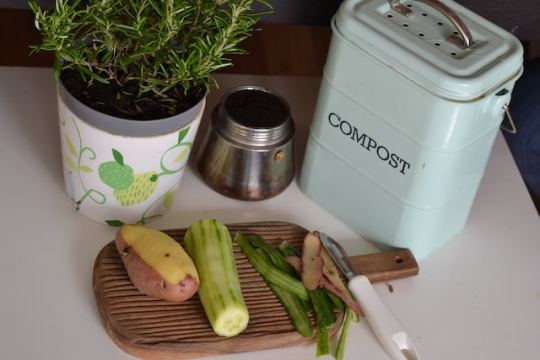
If you're looking to embrace sustainable living practices in your life, among the crucial locations to focus on is waste management and recycling. By decreasing the amount of waste you produce and recycling as much as possible, you can considerably reduce your carbon footprint and make a positive impact on the environment. Here are 10 easy steps to help you begin:
1. Establish a recycling station in your house. Designate a specific area in your cooking area or energy room to sort and store your recyclable items.
2. Purchase a yard waste bin. If your local government provides yard waste pickup, buy a designated bin so that you can compost garden waste and food scraps. This keeps raw material out of garbage dumps and can even result in nutrient-rich soil for your garden.
3. Many mainstream personal care products contain not only harsh chemicals but also packaging materials that can't be recycled. Switching to eco-friendly alternatives is not only better for your health but also for the planet.
4. Repair and fix clothing instead of throwing it away. These easy steps can significantly extend the life of your clothing and minimize fabric waste.
5. Shop with reusable bags and containers. Bring a multiple-use shopping bag with you to avoid wasting single-use bags at the supermarket. Think about utilizing refillable containers for items like bulk grains, nuts, and oils to lower unneeded packaging waste.
6. Compost your food scraps. If you do not have access to backyard waste pickup, consider starting a compost heap in your yard or utilizing a composting bin to break down food scraps.
7. Contribute undesirable items rather of throwing them away. Lots of household items can be donated to charity rather than ending up in a landfill. Clothing, furnishings, and kitchenware are just a few examples of products that can be offered a brand-new lease of life.
8. Use rechargeable batteries instead of disposable ones. Batteries contain products that can be hazardous to the environment if not disposed of appropriately. Changing to rechargeable batteries is a simple way to decrease waste.
9. Minimize junk mail. Register for services to eliminate your name from direct-mail advertising to lower the quantity of paper waste produced by scrap mail.
10. Carry out a clean-up day in your regional community. Get together with your neighbors to tidy up your parks and beaches. This not only assists the environment but also encourages community participation.
Conclusion
Integrating sustainable living practices into your daily routine doesn't have to be frustrating or tough. By implementing little modifications, such as reducing waste, picking environmentally friendly items, and utilizing alternative transport methods, you can make a huge influence on the environment and live a more environmentally friendly lifestyle. Why not start today? Select a couple of the pointers we've shared and dedicate to integrating them into your daily life. Together, we can produce a more sustainable and flourishing world for future generations. Do not forget to share this article with your pals and family to assist get the word out and inspire others to join the sustainability movement.
#Youtube#sustainable living#sustainability#green living#eco friendly#sustainable lifestyle#environmentallyfriendly#reduce#reuse#recycle#mindful living#ethical living#zero waste#sustainable choices#eco conscious#green tips#sustainablecommunity
13 notes
·
View notes
Text
The Art of Ink on Paper: Unveiling the Beauty of Commercial Printing in Hillsborough, NJ
In the bustling town of Hillsborough, New Jersey, the art of printing reigns supreme. From business cards that make a lasting impression to beautifully designed banners that catch the eye, the commercial printing industry is a vital aspect of the local business community, with its craftsmanship enhancing brand visibility and communication. Today, we delve into the intricate world of commercial printing in Hillsborough, NJ, to understand the value it brings to the region and the secrets of its trade.
Print media has a timeless appeal, intertwining traditional artistry with modern design and technology. Surrounded by the picturesque scenery of Hillsborough, NJ, local print shops flourish. These establishments are more than just spaces filled with machinery; they are the custodians of quality, the conduits of creativity, and the architects of art that find their way into the everyday lives of residents and businesses in the region.
From a historical perspective, Hillsborough and the broader Somerset County have been centers of local print culture, supporting local newspapers, heritage preservation, book publishing, and even clandestine printing during the American Revolution. Fast forward to the present, and the craft of commercial printing continues to evolve, with digital prowess complementing traditional printing techniques.
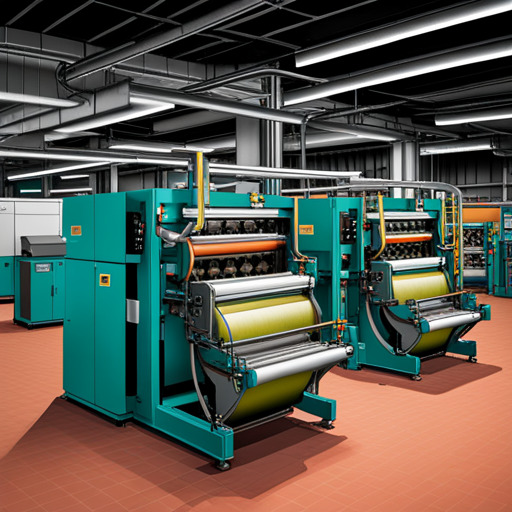
The Symphony of Colors and Machines
The Technology Behind the Tango
As the brisk hum of machines orchestrates the day, you will find that technology sits at the heart of commercial printing. Innovations in offset, digital, and large format printing have streamlined processes, allowing for speed without sacrificing the attention to detail that defines this craft.
Printing isn't simply a matter of hitting 'print' on a computer. It's an intricate process that begins with design, traverses through prepress, and culminates in production. Each step must be executed with precision to achieve the desired result. In Hillsborough, NJ, printing presses symbolize the fusion between art and machinery, where skilled operators are at the helm, ensuring that the colors dance in harmony and every impression is immaculate.
A Palette as Vast as the Imagination
The palette a commercial printing company offers is as diverse as the clientele it serves. Gone are the days of limited color options. Today, the industry buzzes with Pantones and CMYK, offering an array of shades that stretch as far as the imagination. Metallic inks shimmer, spot varnishes entice touch, and eco-friendly options appease the environmentally conscious. In Hillsborough, NJ, a printer's color expertise transforms visions into tangible hues, with a dedication to achieving the perfect tint, tone, and saturation.
Print Beyond the Page: The Impact on Business and Beyond
Branding Magic: Materializing Identity
Commercial printing is the medium through which brands manifest their identity. Logos embossed on premium paper, brochures that unfold to tell a story, and packaging that becomes an experience - these are the tools of branding that hold physical presence. In Hillsborough, NJ, print shops collaborate with businesses to ensure that every piece of print material reflects their essence and aids in customer connection.
Environmental Impact: Sustainable Printing Solutions
In an age where sustainability is not a buzzword but a necessity, commercial printing in Hillsborough, NJ, embraces green practices. From sourcing paper from certified forests to recycling by-products, the industry is making conscientious choices. The commitment to sustainable printing ensures that the beauty of ink on paper is harmonious with the environment.
Joining Forces: The Synergy Between Print and Digital Media
The Digital Dynamic: Complementary, Not Competitive
As the digital realm expands, some may speculate on print's fate. However, in Hillsborough, NJ, the symbiotic relationship between print and digital media is evident. Print is tactile, memorable, and when integrated with digital channels, it can enhance a campaign beyond the screen. The local printing industry adapts, offering services that are 'digitally conscious,' such as variable data printing and QR code integration.
Personalization: The Human Touch in a Digital World
In a world of mass communication, personalization stands out. Commercial printing allows for targeted, personalized messages that resonate with individuals on a personal level. From direct mail to custom-printed gifts, the human touch ensures that the impact is felt at an individual level, fostering deeper connections and increased responses.
The Print Reprise: A Conclusion Beyond the Fade
As we conclude our exploration of commercial printing Hillsborough NJ, we are reminded that print is not just an industry - it's an art. It is the intersection of technology, design, and human skill that creates something tangible, something real. The industry's value isn't just measured by its economic contributions but by the memories, the connections, and the experiences it helps to create.
For local businesses and beyond, the printed piece is a testament to their existence, aspirations, and achievements. It is a form of communication that engages the senses and calls to action.
The next time you hold a business card, read a magazine, or glance at a sign, take a moment to appreciate the craftsmanship behind it. In Hillsborough, NJ, commercial printing stands as a beacon of creativity, quality, and vision - a treasure to be celebrated and utilized.
In this town, on this paper, through these machines, art lives on. And it's a beautiful story to be told, again and again, in ink on paper.
#commercial printing services#printing services#web development company#web development company new brunswick#commercial printing elizabeth nj#commercial printing hillsborough nj#commercial printing metuchen nj#commercial printing new brunswick nj
2 notes
·
View notes
Text


It's no surprise that King Charles III kept sustainability in mind when choosing what to wear on the day of his coronation.
Considering the monarch's lifelong passion for protecting the environment, it's natural that he would choose to make some eco-friendly sartorial choices.
Eco-friendly or not, the king's coronation day look was far from plain.
Upon arrival and departure, Charles wore two different grand robes, per royal tradition.
During the ceremony, King Charles III reused golden vestments, which have been worn for nearly every coronation since 1821, including the Colobium Sindonis, the Supertunica, the Imperial Mantle, the Coronation Sword Belt, and the Coronation Glove.
Buckingham Palace notes that "it is customary for the Supertunica and the Imperial Mantle to be reused, but the reuse of the other objects were made "in the interests of sustainability and efficiency."
Ahead, we break down the different parts of the king's coronation look.
The Robe of State

This magnificent crimson velvet robe was originally worn during King George VI's 1937 coronation.
It has since been conserved by the Royal School of Needlework and Ede and Ravenscroft.
The Colobium Sindonis
(Latin for "shroud tunic")

📷: via Buzzfeed
This piece appears as a white linen tunic with a collar fastened with a single button, fashioned after a priest's alb.
This particular piece of clothing has a sentimental meaning to Charles, as it was previously worn by his grandfather, George VI, during his 1937 coronation.
The Supertunica

This sleeved gold coat was originally made in 1911 for George V's coronation.
George VI and Queen Elizabeth II subsequently wore it at their own crowning ceremonies.
Though it is a relatively modern piece compared to other coronation regalia, it is designed in the same style as coats from medieval coronations, which is in turn influenced by priestly and religious vestments.
This Supertunica features goldwork techniques and embroidery, which was originally completed in 1911 by the Ladies Work Society.
The Imperial Mantle

Worn over the Supertunica, the Imperial Mantle appears like a robe.
It's composed of cloth of gold, gold, silver and silk thread, silk, gold bullion fringe, and a gold clasp.
Additionally, symbolic shapes cover the surface of the Imperial Mantle, including roses, thistles, shamrocks, crowns, eagles, and fleurs-de-lis.
This piece was originally created for George IV's 1821 coronation.
It is the oldest amongst the coronation vestments.
The Coronation Sword Belt

Also known as the Girdle, the Coronation Sword Belt wraps around the Supertunica, with the Jewelled Sword of Offering then fastened at the monarch's waist.
Traditionally, this piece is made anew for each coronation, but Charles has instead chosen to reuse the same Sword Belt that his grandfather, George VI, wore during his 1937 ceremony.
This one features cloth of gold, red silk, and a gold buckle and clip.
The Coronation Glove

The Coronation Glove, also known as the gauntlet, is worn on the monarch's right hand to hold the Sovereign's Sceptre during the moment he is crowned.
Like the Coronation Sword Belt, Charles chose to reuse the hand piece that his grandfather, George VI, wore during his own coronation in 1937, rather than have one made entirely new.
This piece is made up of white leather and further features gilt metal thread embroidery depicting the national emblems of the Tudor Rose, thistle, shamrock, oak leaves, and acorns.
On the back of the glove's hand, there is an embroidered ducal coronet in red velvet above the coat of arms of the family of the Dukes of Newcastle.
The Robe of Estate

To leave Westminster Abbey, Charles put on this purple silk velvet robe that was, again, once worn by George VI. It includes elegant gold embroidery.
#King Charles III#Coronation Service 2023#Coronation 2023#British Royal Family#Coronation Outfit#The Robe of State#The Colobium Sindonis#The Supertunica#The Imperial Mantle#The Coronation Sword Belt#The Coronation Glove#Girdle#Gauntlet#Jewelled Sword of Offering#Sovereign's Sceptre#Royal School of Needlework#Ede and Ravenscroft#Ladies Work Society#George IV#George V#George VI#Elizabeth II
8 notes
·
View notes
Text
The Craftsmanship behind Fittings Manufacturing
Fittings like plastic fittings China are connectors that connect pipes, tubes, or hoses. They are intended to form a secure and leak-proof connection, allowing for the uninterrupted passage of liquids, gasses, or even solid objects. Plumbing, HVAC systems, hydraulic and pneumatic machinery, oil and gas pipelines, and other applications all employ fittings. These little components are the unsung heroes of numerous sectors, keeping together contemporary society's complicated architecture.

Fittings: An Art Form Manufacturing
Manufacturing fittings is a complex procedure that necessitates accuracy and attention to detail. Here's a rundown of the stages required in making fittings:
Material Selection: The selection of materials is critical in the manufacture of fittings. diverse materials, such as brass, stainless steel, PVC, or copper, are required for diverse uses. The material used must be corrosion-resistant, long-lasting, and suitable for the contents transported.
Engineers design fittings with accuracy, taking into account parameters such as pressure ratings, temperature, and flow needs. To generate precise and trustworthy products, the design process may use computer-aided design (CAD).
Machining: Machining procedures like as turning, milling, and drilling are commonly used to make fittings from metal fittings manufacturer. These operations shape and refine the material into the correct shape, guaranteeing that the fitting will work properly.
Quality Control: Throughout the production process, stringent quality control methods are employed. Inspections, testing, and monitoring are performed to ensure that the fittings fulfill industry standards and requirements.
Surface Finish: Depending on the application, fittings may be polished, plated, or coated to improve their durability and appearance.
Manufacturing Fittings Innovations
In recent years, the field of fittings production has undergone considerable developments. These advancements seek to boost efficiency, decrease environmental impact, and increase product performance. Among the significant advancements are:
3D Printing: Additive manufacturing, including 3D printing, is becoming more popular for producing complicated, bespoke fits with minimal material waste.
Sustainable Materials: To lessen its environmental imprint, the industry is investigating eco-friendly materials and manufacturing procedures.
Rapid prototype: Computer-aided design and rapid prototype techniques enable the creation and testing of novel fitting designs to be completed more quickly.
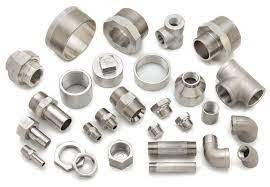
IoT technology is being integrated into fittings from plastic fittings manufacturers to monitor and optimize fluid flow, identify leaks, and increase system performance.
Follow our Facebook and Twitter for more information about our product.
#Metal fittings manufacturer#Metal fittings manufacturer China#Professional Metal Manufacturer#Metal Manufacturer China
2 notes
·
View notes
Text
"The Essential Guide to Cookware: Choosing the Right Pots and Pans for Your Kitchen"
Introduction: Cookware is the unsung hero of every kitchen, silently contributing to the delicious meals we enjoy daily. Whether you're an amateur home cook or a seasoned chef, having the right cookware can make a world of difference in your culinary adventures. In this blog, we'll explore the various types of cookware, their materials, and how to choose the best pots and pans for your cooking needs.
The Fundamentals of Cookware :Before delving into the specifics, let's cover the basics. Cookware is typically categorized into two main types: pots and pans. Pots are deep vessels with high sides, while pans have flat bottoms and low sides. Each serves its unique purpose, from simmering soups in a pot to searing steaks in a pan.

Cookware is an essential part of any kitchen, serving as the foundation for preparing delicious meals. These kitchen tools come in various shapes, sizes, and materials, each designed for specific cooking methods and recipes. Understanding the fundamentals of cookware is key to becoming a proficient cook.
Materials Matter: The material of your cookware affects how evenly it distributes heat, its durability, and its overall performance. Here are some common materials you'll encounter. Material Matter is a brand known for its innovative and sustainable cookware solutions.
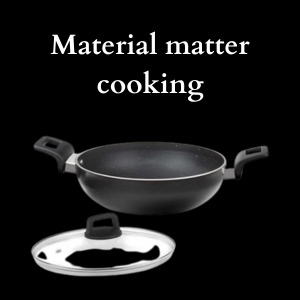
They prioritize using eco-friendly materials and cutting-edge designs to create kitchen tools that enhance cooking experiences while minimizing environmental impact. From non-stick pans to versatile utensils, Material Matter aims to redefine the way we cook and care for our planet.
Stainless Steel: Known for its durability and resistance to staining, stainless steel is versatile and non-reactive. It's ideal for browning, searing, and deglazing. Stainless steel cookware is a popular choice among home chefs and professional cooks alike due to its durability, versatility, and sleek appearance.
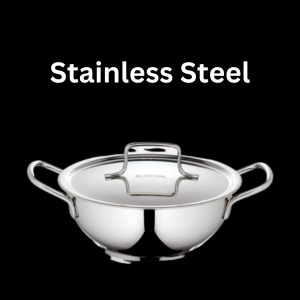
Crafted from an alloy of iron, chromium, and other metals, stainless steel cookware is resistant to rust and staining, making it a long-lasting kitchen staple. Its even heat distribution and non-reactive nature with food make it ideal for a wide range of cooking techniques. In this introduction, we'll explore the benefits and versatility of stainless steel cookware, as well as its maintenance and care to ensure it remains a valuable addition to your kitchen.
Cast Iron: Cast iron cookware retains and distributes heat exceptionally well. It's perfect for slow-cooking, frying, and baking. Seasoning your cast iron adds a natural non-stick surface. Cast iron cookware is a versatile and durable kitchen essential that has been used for centuries. It's made from molten iron that's poured into molds, creating pots, pans, and skillets known for their exceptional heat retention and even heating.

These qualities make cast iron cookware a favorite among professional chefs and home cooks alike. Whether you're searing, frying, baking, or even grilling, cast iron can handle it all. With proper care, it can last a lifetime and develop a natural non-stick surface known as seasoning. Let me know if you'd like to learn more about how to use and maintain cast iron cookware or have specific questions!
Non-Stick: Non-stick cookware has a coating that prevents food from sticking, making it easy to clean. However, it may require gentle care to avoid scratching the surface. Non-stick cookware has revolutionized the way we cook by making food preparation easier and more convenient. These kitchen essentials are typically coated with a non-stick surface, often made from materials like PTFE (Teflon) or ceramic, which prevents food from sticking to the pan.
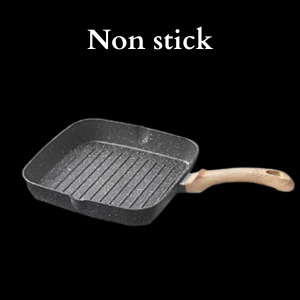
This innovation has reduced the need for excessive oil or butter in cooking, making meals healthier and cleanup a breeze. In this conversation, I can provide you with information, tips, and recommendations related to non-stick cookware
Copper: Copper cookware offers rapid, even heating but often requires a lining of stainless steel or tin to prevent reactivity with certain foods. Copper cookware has a rich culinary history dating back centuries. Renowned for its exceptional heat conductivity, copper cookware offers precise temperature control, making it a favorite among professional chefs and cooking enthusiasts alike. In this guide, we'll explore the benefits, care, and versatility of copper cookware, helping you elevate your culinary skills and create delicious meals.
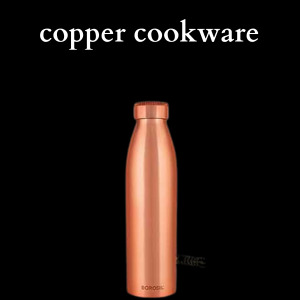
Aluminum: Lightweight and affordable, aluminum cookware heats quickly but may react with acidic foods. Anodized aluminum is a more durable and non-reactive option. Aluminium cookware is a popular choice in kitchens worldwide due to its lightweight, excellent heat conductivity, and affordability. It's commonly used for a wide range of cooking tasks, from sautéing to boiling.
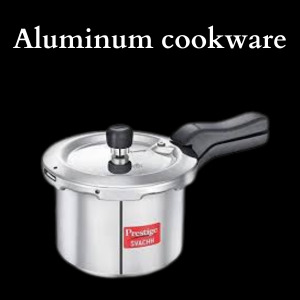
However, it's important to note that uncoated aluminium cookware can react with acidic or alkaline foods, potentially affecting taste and safety. To address this, many aluminium pans have nonstick or anodized coatings. Anodized aluminium is more durable and resistant to corrosion. When choosing aluminium cookware, consider your cooking needs, maintenance preferences, and potential health concerns associated with aluminium exposure.
Choosing the Right Cookware: The cookware you select should align with your cooking style and needs. Here are some considerations. Choosing the right cookware is essential for achieving great results in the kitchen. From pots and pans to utensils and bakeware, selecting the right tools can make cooking more efficient and enjoyable.

In this guide, we'll explore the key factors to consider when choosing cookware, including material, heat conductivity, durability, and maintenance. Whether you're a seasoned chef or a beginner in the kitchen, making informed choices about your cookware will help you elevate your culinary skills and create delicious meals.
Conclusion :Investing in high-quality cookware is an investment in your culinary journey. By understanding the fundamentals of cookware materials and choosing pieces that align with your cooking style, you'll be well-equipped to create delicious meals for years to come. Remember, the right cookware is not just a tool; it's a partner in your culinary adventures. Happy cooking!
#cookware#kitchen#utensils#home & lifestyle#kitchen appliances#stainless steel#manufacturers#daily update#home cooking#main dishes#alluminum fence#stainless steel kitchen appliances#cooker
2 notes
·
View notes
Text

Unearthing the Power of Soil Remediation: A Promising Path towards Environmental Sustainability
The health of our planet is intricately linked to the quality of its soil, an aspect that is often overlooked. Soil pollution presents a significant environmental concern, affecting agricultural productivity, water quality, and ultimately, human health. However, the innovative field of soil remediation holds the key to reclaiming contaminated land and fostering a sustainable future.
Soil remediation, a sector of environmental science, focuses on purifying and revitalizing the soil. It encompasses various techniques to remove harmful pollutants, such as heavy metals, petroleum products, pesticides, and more, from contaminated soil. The ultimate aim is to restore the soil to a state where it can once again support healthy growth and biodiversity.
There are several methods of soil remediation, each tailored to the type and extent of soil contamination.
1. Excavation and Disposal
As a direct approach, this method involves physically removing the contaminated soil and disposing of it in designated landfills. Although it's an immediate solution, it merely transfers the contamination issue from one place to another, leading to concerns about its environmental sustainability.
2. Soil Washing
This technique uses water, sometimes mixed with other substances, to wash away contaminants. It's particularly effective for treating soils contaminated with heavy metals or certain kinds of organic pollutants. However, the process requires treatment of the resulting washwater to avoid secondary contamination.
3. Bioremediation
One of the most promising soil remediation strategies, bioremediation, employs natural processes to clean up contaminated soil. Specific microorganisms or plants (phytoremediation) are used to absorb, break down, or immobilize contaminants. This method is eco-friendly and holds great potential for large-scale applications.
4. Thermal Desorption
Thermal desorption involves heating soil to evaporate the pollutants, which are then collected and treated separately. This process is ideal for soils contaminated with volatile organic compounds, but it requires substantial energy input.
Soil remediation's significance extends far beyond environmental preservation. Healthy soil is critical for a functioning ecosystem, contributing to plant growth, water filtration, and climate regulation. Moreover, with the escalating global population, the need for arable land is at an all-time high. Through soil remediation, previously unusable land can be restored, strengthening food security and promoting sustainable land use.
Simultaneously, soil remediation helps protect groundwater resources. Soil acts as a natural filter, and contaminants present in the soil can leach into groundwater over time, posing serious health risks. By removing these pollutants, soil remediation safeguards our water supply.
In the grand scheme of climate change, soil remediation plays a pivotal role. Soil holds three times as much carbon as the atmosphere. Techniques like bioremediation not only remove contaminants but also improve soil health, increasing its capacity to store carbon and thereby helping to mitigate climate change.
In conclusion, soil remediation is not merely a sector of environmental science; it is a tool of hope for our planet. It embodies the mantra of "heal the soil, heal the planet," and underscores our responsibility to protect the environment. With continued research and technological advancements in soil remediation techniques, we can make strides towards a sustainable future.
Let's invest in soil remediation - for our health, for our food, and for our planet.
#Soil Remediation Techniques#Methods of Soil Remediation#Importance of Soil Remediation#Biological Soil Remediation#Chemical Soil Remediation#Thermal Soil Remediation#Soil Contamination Solutions#Future of Soil Remediation#Nanoremediation for Soil#Prevention of Soil Pollution#Soil Degradation and Remediation#Phytoremediation Techniques#Environmental Restoration Techniques#Soil Clean-up Methods#Soil Sustainability Practices#Eco-friendly Soil Remediation#Industrial Waste Soil Remediation#Soil Remediation Technologies#Innovations in Soil Remediation#Impact of Soil Remediation
2 notes
·
View notes
Text
What is Metal Fabrication?

Metal fabrication transforms raw metal materials into a final product using various cutting, bending, welding, and assembling techniques. The process typically starts with the design and engineering of a product, followed by the selection and preparation of the raw materials, and then the fabrication process itself.
Metal fabrication can create various products, from simple metal components to complex machinery and structures. Some common examples of products created through metal fabrication include metal frames, brackets, enclosures, and structural components for buildings and bridges. Metal fabrication is used in various industries, including construction, automotive manufacturing, aerospace, and consumer products.
Why is metal fabrication important?
Metal fabrication is important for several reasons:
Customisation: Metal fabrication allows for customising metal products according to specific requirements, such as size, shape, and design. This flexibility enables businesses and industries to produce products that meet their unique needs and specifications.
Durability: Metal products produced through fabrication are durable and long-lasting. They can withstand extreme temperatures, pressures, and forces, making them ideal for various industries, including construction, manufacturing, and transportation.
Cost-effective: Fabricating metal products is often more cost-effective than purchasing pre-made products. This is because fabricators can produce multiple pieces of a product using the same materials, reducing waste and keeping costs low.
Quality control: Metal fabrication ensures high-quality products through strict quality control measures. Each product is inspected and tested to meet industry standards and specifications.
Metal fabrication is important because it enables businesses and industries to produce high-quality, customised, durable metal products that meet their unique needs and requirements.
What are the benefits of metal fabrication?
Metal fabrication offers many benefits, including:
Customisation: Metal fabrication allows for custom metal products that meet each customer's needs and requirements.
Strength and durability: Metal products created through fabrication are strong, durable, and able to withstand a variety of harsh conditions, making them ideal for use in construction and manufacturing industries.
Versatility: Metal fabrication can create a wide range of products, from small components to large structures, and can be used in various industries such as automotive, aerospace, construction, and more.
Cost-effective: Fabricated metal products can be produced in large quantities at a lower cost than other manufacturing processes, making them an affordable option for businesses and consumers.
Efficiency: With advanced technology and equipment, metal fabrication can produce high-quality products with minimal waste and faster turnaround times.
Aesthetics: Metal fabrication offers a wide range of finishes and coatings that can enhance the appearance of metal products, making them visually appealing and functional.
Recyclable: Metal is a recyclable material, which makes it an eco-friendly choice for businesses and consumers who want to reduce their environmental impact.
These benefits make metal fabrication an important and valuable process for a variety of industries and applications.
When do you need to get metal fabrication services?
You may need metal fabrication services when you require custom metal parts, structures or products for various purposes. Metal fabrication can be used in various industries, including construction, automotive, aerospace, manufacturing, and more. You may need metal fabrication services when you require unique parts or components that cannot be found off the shelf or a specific metal product designed and manufactured to your specifications.
Some common examples of when you may require metal fabrication services include the production of metal frames, structures, and enclosures, creating custom metal products, fabricating metal components for machinery or equipment, and repairing or modifying existing metal structures or products.
© DDK Engineering
2 notes
·
View notes
Text
Unleash Your Creativity with BondMetal – Your Go-to Metal Fabrication Partner 🌟✨
Hey, Tumblr fam! 🔥 We just discovered this incredible website that's perfect for all the DIY enthusiasts, metal art aficionados, and industrial design lovers out there. Introducing BondMetal (https://bondmetal.ae/), the ultimate destination for all your metal fabrication needs in the UAE! 🚀🛠️
🔩 Custom Metal Fabrication: It doesn't matter if you're working on a small-scale project or a massive industrial design; BondMetal has got your back. They specialize in laser cutting, bending, welding, and so much more. With precision and efficiency, you can trust them to create the perfect piece for your vision. 💯
🎨 Powder Coating & Finishing: Give your metal art a stunning, durable finish with BondMetal's powder coating services. Choose from a wide variety of colors and textures to create a masterpiece that'll withstand the test of time. 🌈
🏆 Quality and Craftsmanship: BondMetal is known for its commitment to quality and attention to detail. With their experienced team, you can be confident that your project will be handled with care, ensuring a final product you'll be proud of. 👌
💡 Expert Consultation: Are you unsure about the best materials, design, or fabrication techniques for your project? BondMetal's experts are here to help. They'll guide you through the entire process, so you can make informed decisions for the perfect outcome. 🧠
🌍 Environmentally Conscious: BondMetal understands the importance of being environmentally responsible. They continuously work towards reducing their carbon footprint and adopting eco-friendly practices, making them a company you can feel good about supporting. 🌱
Ready to kickstart your next metal project? Head over to https://bondmetal.ae/ and explore the endless possibilities! Let your creativity run wild and watch your ideas transform into beautiful, functional pieces of art. Don't forget to share your finished projects with us – we'd love to see what you create! 📸
#BondMetal#MetalFabrication#UAE#MetalArt#DIY#IndustrialDesign#CustomMetalWork#LaserCutting#PowderCoating#EcoFriendly
3 notes
·
View notes
Text

Revolutionizing Cooling & Cleaning with Dry Ice – Dryice Abudhabi!
When it comes to high-performance cooling, industrial cleaning, and special effects, Dryice Abudhabi is your trusted partner. As a leading Dryice supplier in Abudhabi and Dryice manufacturer in Abudhabi, we provide top-quality dry ice solutions for various industries. But what makes dry ice so exceptional? Let’s explore its benefits and why Dryice Abudhabi is the preferred choice!
Understanding Dry Ice: The Science Behind It
Dry ice is the solid form of carbon dioxide (CO₂), maintaining an ultra-cold temperature of -78.5°C (-109.3°F). Unlike regular ice, it sublimates directly into gas, leaving no water residue. This makes it an unparalleled cooling agent, perfect for industrial and commercial applications.
The Many Advantages of Dry Ice
1. Superior Cooling Efficiency
Dry ice is much colder than traditional ice, making it the preferred option for industries that require ultra-cold storage. It is widely used for transporting perishable food, pharmaceuticals, and medical supplies like vaccines, ensuring they stay at optimal temperatures without melting.
2. Advanced Dry Ice Blasting – A Revolutionary Cleaning Method
Unlike traditional cleaning methods that use water and harsh chemicals, dry ice blasting is a non-abrasive technique that removes contaminants, grease, and coatings without leaving behind any residue. It is ideal for cleaning industrial machinery, food processing equipment, and aerospace applications, ensuring a thorough and eco-friendly clean.
3. Essential for Food Preservation & Transportation
The food industry relies heavily on Dryice for preserving and transporting frozen seafood, meats, dairy, and baked goods. Supermarkets, restaurants, and catering businesses benefit from its cooling power, ensuring fresh delivery to customers.
4. Critical for Medical & Pharmaceutical Applications
Dry ice is indispensable for medical and pharmaceutical industries, ensuring the safe transport of biological samples, vaccines, and life-saving medicines that require precise temperature control. Hospitals, laboratories, and research institutions worldwide rely on dry ice for its reliability.
5. Creating Stunning Special Effects
Want to create mesmerizing fog effects for concerts, events, or films? Dry ice, when mixed with warm water, produces thick, enchanting fog, making it a staple in theatrical performances, movie productions, and even Halloween decorations.
6. Eco-Friendly Pest Control & Agricultural Benefits
Dry ice serves as a non-toxic alternative to chemical pesticides, effectively eliminating pests by releasing carbon dioxide into burrows and suffocating rodents and insects naturally. It also helps protect grain storage facilities from infestations.
7. Safe, Non-Toxic & Sustainable
Unlike chemical coolants, dry ice is completely safe, non-toxic, and environmentally friendly. Since it sublimates directly into CO₂ gas, it leaves no harmful residue. Dry ice is made from recycled carbon dioxide, making it an eco-conscious choice that helps reduce industrial emissions.
8. Emergency Cooling & Backup Refrigeration
Power outage? Dry ice acts as a backup refrigeration solution, ensuring that food, medicines, and other perishable items remain fresh for extended periods. This makes it invaluable for homes, restaurants, and grocery stores.
9. Industrial & Manufacturing Uses
Dry ice is extensively used in industrial applications, including metal shrinking, pipe freezing, and rubber molding. It enables precise assembly of metal components and helps repair underground pipes without the need for complete shutdowns.
10. A Cleaner Alternative to Traditional Ice
Unlike water ice, dry ice does not melt into a liquid, making it ideal for applications where excess moisture is undesirable, such as in pharmaceuticals, electronics, and aerospace industries.
Why Choose Dryice Abudhabi?
✅ Trusted Dry Ice Manufacturer in Abu Dhabi
We are the leading Dryice manufacturer in Abudhabi, supplying high-quality dry ice for various industrial, medical, and commercial needs.
✅ Reliable Dry Ice Supplier in Abu Dhabi
Our Dryice supplier in Abudhabi services ensure businesses receive a steady supply of dry ice with timely delivery across Abu Dhabi and the UAE.
✅ Premium Quality at Competitive Prices
We offer the best quality dry ice at cost-effective rates, making it an affordable solution for all industries.
✅ Customized Dry Ice Solutions
We provide dry ice in various forms, including pellets, blocks, and slices, tailored to meet your specific requirements.
✅ Fast & Reliable Delivery
Timely delivery is crucial, and our streamlined logistics ensure you receive your dry ice on schedule, every time.
📞 Place Your Order Now: +971553635753 🌐 Visit: https://dryiceabudhabi.com/
0 notes
Text
Sustainable Practices in Stainless Steel Sheet Manufacturing in India
As the world shifts towards environmentally conscious practices, the stainless steel sheet manufacturing industry in India is stepping up to adopt sustainable methods. For Jayant Rajendra Metal, a leading stainless steel sheets supplier in India, implementing eco-friendly measures is not just a responsibility but a commitment to building a greener future. Here, we explore the sustainable practices being adopted in the manufacturing of stainless steel sheets and how they contribute to environmental preservation.
Energy-Efficient Production Processes
One of the most significant steps towards sustainability is reducing energy consumption during production. Stainless steel manufacturing is energy-intensive, but modern technologies such as electric arc furnaces (EAF) are making a difference. These furnaces recycle scrap metal and consume significantly less energy compared to traditional blast furnaces. At Jayant Rajendra Metal, we prioritize sourcing from manufacturers who utilize energy-efficient systems to ensure that our products have a minimal carbon footprint.
Recycling and Reuse of Materials
Stainless steel is 100% recyclable, which makes it an inherently sustainable material. The use of recycled materials in stainless steel sheet production not only reduces the demand for raw resources but also minimizes waste generation. Many stainless steel sheets suppliers in India, including Jayant Rajendra Metal, encourage a circular economy by promoting the recycling of used materials. By integrating recycled content into new products, the industry significantly reduces the environmental impact of mining and raw material extraction.
Water Conservation Techniques
Water is a crucial resource in stainless steel manufacturing, especially for cooling and cleaning processes. However, innovative water management systems are enabling manufacturers to recycle and reuse water effectively. Advanced treatment plants ensure that wastewater is treated and reused within the production cycle, reducing freshwater consumption. Suppliers like Jayant Rajendra Metal actively support manufacturers that prioritize water conservation in their operations.
Adoption of Green Technologies
The integration of green technologies is revolutionizing the stainless steel manufacturing process. Renewable energy sources such as solar and wind power are increasingly being used to run manufacturing units, reducing reliance on fossil fuels. Additionally, the adoption of energy recovery systems helps capture and reuse heat generated during production. By aligning with manufacturers who invest in such green technologies, Jayant Rajendra Metal underscores its commitment to sustainability.
Reducing Transportation Emissions
The transportation of raw materials and finished stainless steel sheets contributes significantly to carbon emissions. To mitigate this, Jayant Rajendra Metal collaborates with logistics partners who use fuel-efficient vehicles and optimize delivery routes. Furthermore, sourcing materials locally where possible reduces transportation distances and associated emissions.
Conclusion
Sustainable practices in stainless steel sheet manufacturing are essential for addressing environmental challenges and fostering a greener future. Companies like Jayant Rajendra Metal play a pivotal role in promoting these practices by collaborating with eco-conscious manufacturers and emphasizing the importance of sustainability to their clients. As a trusted stainless steel sheets supplier in India, Jayant Rajendra Metal remains committed to delivering high-quality, environmentally responsible products that contribute to a sustainable tomorrow.
To Know More https://jayantrajendrametal.com/2025/01/22/stainless-steel-sheets-supplier-in-india/

0 notes
Text
The Ultimate Guide to Labeling Paper Bags in Delhi
With the rising demand for eco-friendly packaging, labeling paper bags in Delhi has become a crucial aspect for businesses. From retail stores to food outlets, personalized and well-branded paper bags enhance customer experience and brand visibility. A properly labeled paper bag serves as a marketing tool, conveying essential information and creating a lasting impression.
Importance of Labeling Paper Bags in Delhi
In a competitive market like Delhi, businesses must differentiate themselves through branding. Labeling paper bags in Delhi ensures that your brand remains visible to customers even after they leave your store. Printed logos, slogans, and contact details on paper bags help businesses establish brand recognition. Moreover, adding eco-friendly certifications and product details can enhance trust among customers.
Types of Labeling for Paper Bags
There are several techniques used for labeling paper bags in Delhi, depending on the business’s needs and budget:
Screen Printing – A cost-effective method suitable for bulk orders, offering bold and vibrant prints.
Flexographic Printing – Ideal for large-scale production, ensuring high-speed and high-quality output.
Digital Printing – Allows for intricate designs, multiple colors, and small quantity customization.
Embossed or Foil Stamping – Enhances luxury appeal with metallic or raised branding.
Sticker Labels – A flexible and budget-friendly option, suitable for small businesses.
Trends in Labeling Paper Bags in Delhi
The packaging industry is evolving with new trends in labeling paper bags in Delhi, such as:
Eco-Friendly Labels: Brands are opting for biodegradable ink and recycled paper materials.
Minimalist Designs: Simple, clean, and elegant branding for a premium look.
QR Code Integration: Adding scannable codes for product information, discounts, or digital engagement.
Personalized & Custom Designs: Custom prints tailored to individual businesses or seasonal campaigns.
Multi-Use Bags: Labels designed for reusability, making bags more sustainable and versatile.
Choosing the Right Labeling Solution
Selecting the best method for labeling paper bags in Delhi depends on several factors:
Business Type: Retail, food, fashion, or corporate giveaways may require different branding approaches.
Budget Considerations: Some labeling techniques are more affordable than others, depending on order volume.
Material Quality: High-quality paper bags require durable printing methods to maintain brand aesthetics.
Customization Needs: If frequent design changes are required, digital printing or sticker labeling may be preferable.
Why Choose Allied Packworld?
At Allied Packworld, we offer premium solutions for labeling paper bags in Delhi, ensuring your brand stands out in the market. Whether you need eco-friendly printing, custom branding, or bulk orders, we provide high-quality and cost-effective solutions. Our expertise in paper bag packaging ensures that your business receives the best labeling solutions tailored to its specific needs.
#LabelingPaperBags#PaperBagDelhi#EcoFriendlyPackaging#BrandedPaperBags#SustainablePackaging#CustomPaperBags#AlliedPackworld
0 notes
Text
Sustainability Practices of Transmission Line Towers Manufacturers in Gujarat

Recently, renewable energy has been on the rise, making transmission line towers more important than ever. Gujarat has quickly become a leader in renewable energy production, which has led to an increase in the manufacturing of transmission line towers to support the state's expanding energy needs. As more and more manufacturers in Gujarat work to meet this demand, they're focusing on making their processes more sustainable.
In this article, we’ll take a closer look at how these manufacturers are embracing sustainability and the role that transmission line engineering plays in shaping a more eco-friendly energy future.
Why Transmission Line Towers Matter
Transmission line towers are crucial for moving electricity from power plants to the areas that need it. These towers are essential in connecting large-scale energy projects, like wind and solar farms, with the wider electricity grid. In Gujarat, these towers help deliver power from the state's abundant renewable resources, like wind and solar, to both urban and rural areas.
But as concerns about the environment grow, it’s important that the process of making these towers is just as sustainable as the energy they help deliver. That’s where sustainable practices come in.
How Transmission Line Tower Manufacturers in Gujarat Are Adapting
To keep up with the demand for green transmission infrastructure, transmission line tower manufacturers in Gujarat are taking a number of steps to make their processes more sustainable. Here’s how:
1. Choosing the Right Materials
One of the biggest parts of making transmission line towers more sustainable is choosing eco-friendly materials. The primary material used is steel, which is highly recyclable. Manufacturers are increasingly turning to recycled steel and other metals, which helps lower the carbon footprint of the towers and reduces waste.
2. Making the Manufacturing Process More Energy-Efficient
Building transmission line towers involves a number of steps, like casting, welding, and galvanizing. To make this process more sustainable, manufacturers are investing in energy-efficient technologies. Many are now using renewable energy in their factories, which cuts down on the need for fossil fuels and makes the whole production process more eco-friendly.
3. Reducing Carbon Emissions During Transport
Transporting transmission line towers to their installation sites can add to the carbon footprint. To reduce this impact, manufacturers are focusing on improving logistics. This includes using more fuel-efficient vehicles and planning delivery routes that minimize fuel consumption and carbon emissions.
4. Building Durable Towers That Last Longer
Sustainability isn’t just about the materials or the process—it’s also about the design. The goal is to make transmission line towers that last longer and can withstand harsh weather conditions. In Gujarat, manufacturers are using durable materials and modern techniques to ensure that the towers don’t need frequent repairs or replacements. This helps reduce waste over time.
5. Getting Certified for Sustainability
A lot of manufacturers in Gujarat are now working to get sustainability certifications, like ISO 14001. These certifications show that the manufacturers are meeting high environmental standards. It’s a way for them to demonstrate their commitment to making the energy infrastructure greener.
6. Managing Waste and Reducing Pollution
Waste management is another important part of the sustainability picture. Manufacturers are putting systems in place to ensure that things like scrap metal, paint, and chemicals are disposed of properly. By recycling materials and controlling pollution, they’re helping to reduce the environmental impact of their operations.
The Role of Transmission Line Engineering in Sustainability
Transmission line engineering plays a big part in making the whole process more sustainable. It’s not just about building efficient power lines - it’s about making sure the whole system has minimal environmental impact.
For example, the way transmission line towers are placed is carefully considered to minimize any negative effects on local wildlife or ecosystems. In Gujarat, many wind and solar farms are built in remote areas, so manufacturers design transmission line towers to blend in with the environment, reducing their impact on nature.
Plus, transmission line engineering now includes smart monitoring systems that help spot problems before they become major issues. This makes it easier to maintain the towers, which means fewer repairs and less waste in the long run.
What’s Next for Transmission Line Towers in Renewable Energy?
The future looks bright for transmission line towers in Gujarat, especially with all the innovations happening in sustainable transmission line engineering. As the state continues to expand its renewable energy capacity, manufacturers are focused on adopting even more eco-friendly practices.
In the years ahead, we’ll likely see transmission line towers made from more recycled materials, with even more energy-efficient manufacturing processes and better logistics. These advances will not only help Gujarat meet its renewable energy goals but also make a positive contribution to the global effort against climate change.
Wrapping Up
The sustainability practices being adopted by transmission line tower manufacturers in Gujarat are making a real difference in the development of greener energy infrastructure. From choosing recyclable materials to using energy-efficient production methods, these manufacturers are paving the way for a more sustainable future.
As we continue to push for clean energy, it’s crucial that every part of the process, including transmission line towers, is done with sustainability in mind. Gujarat is setting a great example for the rest of the world to follow in the move toward a more sustainable energy future.
If you want to learn more about how transmission line towers are helping in renewable energy transmission, visit KP Green Engineering. You can also contact us if you have any questions or need more information.
#Transmission Line Towers#Transmission Line Tower Manufacturers#Renewable Energy Infrastructure#Green Transmission Infrastructure#Transmission Line Engineering#Sustainable Transmission Towers
0 notes
Text
Construction Waste Removal: Best Practices and Efficient Solutions

Effective construction waste removal is a critical part of managing any building, renovation, or demolition project. With construction activities generating vast amounts of debris, proper waste disposal ensures a clean, safe, and environmentally friendly worksite. By adopting efficient removal strategies and sustainable practices, contractors can minimize waste-related issues and reduce their environmental footprint.
This article explores the types of construction waste removal strategies, benefits of efficient waste management, and tips for choosing the right removal solutions.
Types of Construction Waste
Understanding the types of waste generated during construction projects is essential for planning proper disposal strategies. Here are the most common categories:
1. Concrete, Brick, and Masonry Debris
These materials often come from demolition and renovation activities. They are heavy and bulky but can often be recycled and reused for road bases or new construction.
2. Wood and Timber Waste
Wood waste is generated from framing, flooring, and roofing. Untreated wood can be repurposed for other projects, used as mulch, or converted into biofuel.
3. Metal Scraps
Construction often results in metal waste, including steel, aluminum, and copper. Metals are highly recyclable and retain their quality during reuse.
4. Drywall and Plasterboard
Drywall waste is common in residential and commercial construction. Recycling drywall can prevent harmful materials from entering landfills.
5. Plastic Materials
Piping, packaging, and insulation materials contribute to plastic waste. Proper sorting can facilitate recycling efforts.
6. Hazardous Materials
This category includes asbestos, lead paint, and solvents. Handling hazardous materials requires specialized procedures to ensure safe removal and disposal.
Benefits of Efficient Construction Waste Removal
1. Environmental Sustainability
Proper waste management reduces the amount of construction debris sent to landfills, conserving resources and minimizing pollution.
2. Improved Safety on Site
A clutter-free worksite reduces the risk of accidents, injuries, and fire hazards.
3. Cost Savings
Recycling and repurposing materials can cut down on disposal fees and reduce the need for purchasing new materials.
4. Regulatory Compliance
Following proper waste removal practices helps contractors meet local regulations and avoid legal penalties.
5. Enhanced Reputation
Adopting sustainable and efficient waste management practices can boost a company’s image as an environmentally responsible business.
Construction Waste Removal Strategies
1. On-Site Sorting and Segregation
Separate waste materials into categories such as wood, metal, concrete, and hazardous substances. This practice simplifies recycling and disposal processes.
2. Recycling and Repurposing
Identify recyclable materials and partner with recycling facilities to process them. Concrete, metal, and wood are among the most commonly recycled materials.
3. Hiring a Waste Removal Service
Professional waste removal companies provide tailored solutions for construction sites, including:
Dumpster rentals
On-site sorting services
Eco-friendly disposal practices
4. Implementing Waste Reduction Techniques
Prevent waste generation by:
Ordering materials in accurate quantities
Using modular construction techniques
Reusing off-cuts and surplus materials
Choosing the Right Dumpster Size for Construction Projects
Selecting the correct dumpster size is crucial for efficient waste removal. Common sizes include:
1. 10-Yard Dumpster
Best for small projects such as bathroom renovations
Holds approximately 2-3 tons of debris
2. 20-Yard Dumpster
Ideal for medium-sized projects like kitchen remodels
Can accommodate about 4-5 tons of waste
3. 30-Yard Dumpster
Suitable for major home renovations and small commercial projects
Holds approximately 6-8 tons of debris
4. 40-Yard Dumpster
Best for large-scale demolition and commercial construction
Can handle up to 10 tons of waste
Tips for Efficient Construction Waste Management
1. Develop a Waste Management Plan
Create a detailed plan outlining how waste will be managed, including sorting, recycling, and disposal methods.
2. Train Workers
Educate workers on waste segregation, recycling practices, and safety procedures for handling hazardous materials.
3. Partner with Local Recycling Facilities
Establish relationships with nearby recycling centers to streamline the process of disposing of recyclable materials.
4. Monitor and Evaluate Waste Generation
Track the volume and types of waste generated to identify areas for improvement and optimize disposal strategies.
5. Schedule Regular Waste Removal
Avoid worksite clutter by scheduling frequent waste pickups based on the pace of the project.
Environmental Impact and Sustainable Practices
1. Recycling and Upcycling
Recycling construction materials reduces landfill waste and conserves raw resources. Upcycling, or creatively repurposing materials, adds value while reducing disposal needs.
2. Eco-Friendly Material Choices
Opt for sustainable construction materials, such as recycled steel, reclaimed wood, and eco-friendly insulation products.
3. LEED Certification
Following green building practices, including efficient waste management, can help projects qualify for LEED (Leadership in Energy and Environmental Design) certification.
Common Challenges in Construction Waste Removal
1. Handling Hazardous Waste
Disposing of materials like asbestos and lead requires specialized knowledge and permits.
Solution: Partner with licensed hazardous waste removal services that follow proper safety protocols.
2. Managing Large Volumes of Debris
High waste volumes can overwhelm worksites and complicate removal efforts.
Solution: Use appropriately sized dumpsters and schedule regular pickups.
3. Lack of Recycling Infrastructure
Some areas may lack convenient recycling facilities.
Solution: Work with waste removal companies that offer recycling solutions and haul debris to the appropriate facilities.
Cost Factors for Construction Waste Removal
Several factors influence the cost of waste removal, including:
Type and Volume of Waste: Heavier and hazardous materials often incur higher fees.
Dumpster Size: Larger dumpsters typically cost more to rent.
Rental Duration: Longer rental periods may result in additional charges.
Location: Disposal fees vary by region.
Recycling Services: Some facilities charge processing fees for certain materials.
How to Choose a Reliable Construction Waste Removal Service
When selecting a waste removal provider, consider the following factors:
Experience and Expertise: Look for companies with a proven track record in construction waste management.
Range of Services: Ensure they offer dumpster rentals, recycling, and hazardous waste disposal.
Eco-Friendly Practices: Choose companies that prioritize sustainable disposal methods.
Customer Reviews: Check testimonials and ratings to gauge service quality.
Conclusion
Effective construction waste removal is essential for maintaining a clean, safe, and environmentally responsible worksite. By adopting sustainable practices, choosing the right disposal methods, and partnering with reliable waste removal services, contractors can manage debris efficiently while contributing to a greener planet.
Start implementing these strategies today to streamline your waste removal process, reduce costs, and promote a culture of environmental responsibility on your construction projects.
#dumpster rental#house demolition#jsdisposal#waste management#junk removal#construction waste removal
0 notes